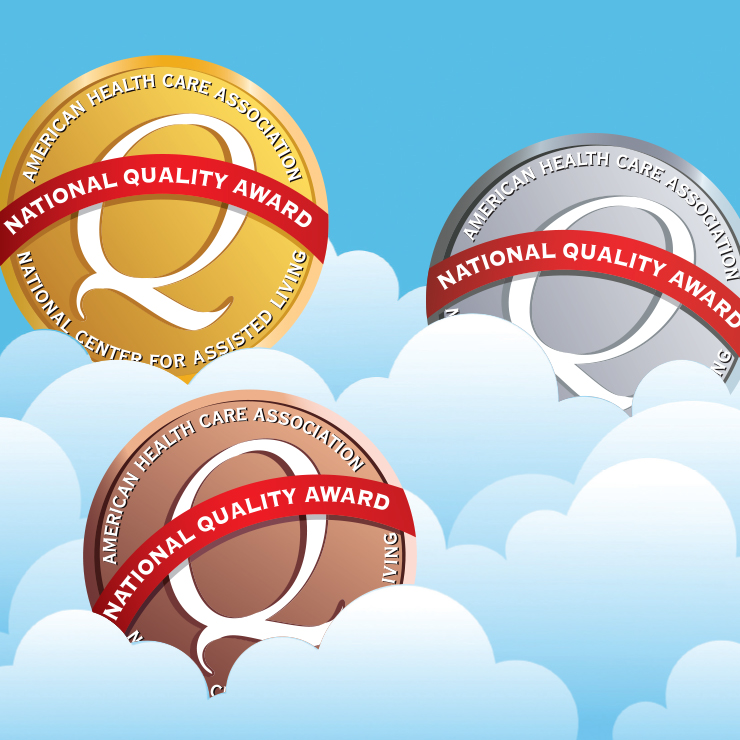 For long term care organizations, the AHCA/NCAL Quality Award journey is like running a marathon. It takes some training and a while to hit your stride. It takes planning and pacing. However, ultimately, it’s well worth the effort, and mile after mile, applicants and award recipients alike gain quality improvement tools, knowledge, and strategies that make their organizations and their teams stronger, more effective, and more resilient.
For long term care organizations, the AHCA/NCAL Quality Award journey is like running a marathon. It takes some training and a while to hit your stride. It takes planning and pacing. However, ultimately, it’s well worth the effort, and mile after mile, applicants and award recipients alike gain quality improvement tools, knowledge, and strategies that make their organizations and their teams stronger, more effective, and more resilient.
Examiners Attest: Leadership Matters
Each year, hundreds of long term care professionals are selected to serve as examiners of the Quality Award’s Silver and Gold-level applications. They gain a keen understanding of what it takes for facilities to achieve excellence. Key to the Quality Award Program is leadership on the part of the applicants, say examiners, who keep organizations moving forward and help them over the hurdles they may encounter along the way. This leadership really starts and ends with communication and teamwork.
“Leadership plays an important role by creating a shared vision and better employee engagement,” said Brooke Francis, executive director at CommuniCare Health Services in West Virginia and a Silver examiner, adding, “It improves communication, engagement, and overall productivity.”
Allan Engelauf, Gold examiner and administrator of Vista Pacifica Convalescent in California, observed, “Leadership really begins with clearly defining the organization’s vision, mission, and values and how they will be realized and communicated to staff, customers, and partners.”
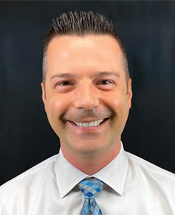 For applicant facilities, successful leaders are the eyes and ears of their organizations. As Gold examiner Gregory Leoce, RN, DNP, NHA, LHRM, RAC-CT, vice president of clinical services at Facility Support Company in Florida, “Being a leader in an organization requires you to understand all parts of the operations and your people and bring them all together to reach a common goal.”
For applicant facilities, successful leaders are the eyes and ears of their organizations. As Gold examiner Gregory Leoce, RN, DNP, NHA, LHRM, RAC-CT, vice president of clinical services at Facility Support Company in Florida, “Being a leader in an organization requires you to understand all parts of the operations and your people and bring them all together to reach a common goal.”
Leadership requires flexibility and the ability to admit where there are gaps or issues. “Just because we have done something for a very long time doesn’t necessarily mean that’s the way we should keep doing it,” said Robin Nicholson, executive director at Holly Residential Care Center and director of quality for Ohana Ventures in addition to serving as a Silver Quality Award examiner.
She added that leaders are efficient time managers as well. “I’ve learned through the Quality Award process the importance of every action I spend my time on having purpose and driving the organization to the results we are trying to achieve. The most limited resources we have are time and energy, and they are too valuable to waste.” She noted “The role of leadership in an applicant organization is huge. It’s like the bow that ties everything together and makes sure everything is aligned and shares the most significant vision.”
Examiners go through rigorous training, and many start out as applicants and award recipients themselves. Therefore, they know the process and the importance of leadership in successfully going through the awards process. They experienced for themselves the value of the Quality Award journey and are passionate about helping others on their quality improvement path.
“Being an examiner enables me to uphold the standards of the Quality Award Program,” said Engelauf. As a Gold Award recipient, he noted, “Selecting other recipients is an honor, and it’s a great opportunity to help other providers in their quality improvement efforts.”
Leoce was introduced to the Quality Awards program in 2011 and became an examiner a few years later. He said, “I just really enjoy the program. I love the Baldrige criteria and what they can do for skilled nursing facilities and the quality improvement process.”
Francis, who is not only an examiner but has been through the Bronze and Silver application processes multiple times, said, “I did find it a little bit intimidating at first, but it’s become very near and dear to my heart.”
Nicholson, who became an examiner in 2024, saw the awards as groundbreaking when she first heard about them. “I wasn’t an administrator then, but I knew it was something that I wanted to try to pursue with a community once I got into that administrator role,” she said. Through her efforts, her current organization has so far pursued and received the Bronze and Silver awards. Nicholson takes her role as an examiner seriously, saying, “We have the opportunity to share feedback with applicants to help them look at their approaches and processes in a different way so they can achieve the award and move forward in their quality improvement journey.”
Resident and Staff Recognition Take Center Stage
Some of the highest performing Quality Award applicants have similar focuses on how they value residents and staff. For example, Engelauf said, “We went to a building last year that had some unique employee recognition processes, including a daily meeting between shifts where team members can recognize their peers. It really creates a culture of respect and teamwork in the building.”
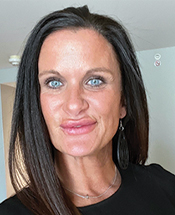 Francis said, “There was one organization that I went to for a site visit where they actually had purchased a house that was right next to the facility, and they used it to house employees who were perhaps staying over to work double shifts or who needed a place to stay temporarily because of something that had happened in their lives.” At another facility, they dedicated a room as a cafeteria with meals for staff.
Francis said, “There was one organization that I went to for a site visit where they actually had purchased a house that was right next to the facility, and they used it to house employees who were perhaps staying over to work double shifts or who needed a place to stay temporarily because of something that had happened in their lives.” At another facility, they dedicated a room as a cafeteria with meals for staff.
Facilities implementing innovative ideas like these serve as a role model for others nationwide, said Leoce. He added, “It also makes a difference when organizations not only survey employees but take their input seriously and act on it.”
Francis said, “I’ve seen other organizations where every morning the whole team goes out and greets every resident and every employee. I think that makes a big difference when your residents and employees alike feel recognized and valued.”
“Aha” Moments and Eye-Opening Innovations
Early in his involvement with the Quality Awards, when he was an applicant, Leoce had an “aha” moment when he realized that successful quality improvement was aligned with the Baldrige Criteria, on which the award program is based. These criteria are organized into seven categories: leadership, strategy, customers, measurement/analysis/knowledge management, workforce, operations, and results. These elements enable health care organizations to achieve and maintain high levels of safety, loyalty, and positive outcomes. Leoce said, “It’s quite common in the skilled nursing industry that few people have had exposure to the Baldrige Criteria or know a whole lot about them. When they get into the program and learn more, they realize how effective they can be in process improvement.”
Nicholson said, “One approach that our company has taken is to identify Administrator in Training (AIT) candidates and grow them alongside experienced administrators who are actively pursuing various levels of the Quality Awards. We’ve been able to not only teach the role of the administrator but also approach this training from a Baldrige perspective early on. It’s like being baptized in a culture of quality, allowing our organization to produce next generation leaders who can lean on a skillset of process, evaluation, and improvement skills that will help them be a better leader, no matter what job they end up in throughout their career.”
She added, “This last year, we have internally grown three AIT candidates who trained under three different administrators who were award recipients and active applicants for this next award cycle. Over the course of a year, all three of these AITs participated in the Quality Award process.”
Lessons Learned; Innovations Uncovered
Examiners learn much from their efforts, as well as their own Quality Award journeys. Among their insights:
- “Rather than just submitting an interesting narrative, some applicants will use charts, graphs, and flow charts that really help the examiners see the flow of their progress,” said Engelauf. These can paint an illuminating picture of their quality improvement efforts and their results.
- Facilities that reach the Gold Award level have staff, including front line caregivers—who can speak to quality improvement. This is part of a culture that is embedded throughout the building,
- said Leoce.
- The Quality Award Program has become something like the Oscars for long-term care. As Leoce said, “It’s one of the most prestigious awards to get in the industry. People know the awards take a lot of work to achieve, but they are willing to put in the effort and are quite proud to receive the award.” It’s much more than just a plaque on the wall, he stressed, noting that award recipients showcase their achievement and celebrate it with residents, families, and staff.
- Nicholson noted that she is seeing more facilities celebrating diversity among residents and the workforce. “We are celebrating different heritages and cultures, and this provides such an opportunity for us to widen our perspective in terms of what makes us unique,” she said.
- As facilities go through the award application process, they are going to see where there are gaps and areas where they are not performing as well as they could. This should not discourage people; instead, it presents opportunities. Nicholson offered, “Don’t get caught up in the negative and forget to celebrate the positive, and vice versa. You have to look at your data in a way that lets you analyze your performance over time. You should take a 30,000-foot view to see how and where you’ve improved and where there are additional opportunities for improvement.”
The Quality Award Program is structured in a way that lets applicants see their progress and clearly envision where they want to go and how they will get there. Francis said, “You start your journey with the Bronze, which enables you to recognize where you’re going. I’m not saying it’s a cake walk, but it’s a basic and practical first step on your journey.”
The path becomes even clearer as applicants pursue the Silver Award. “When we were headed for the Silver, I started compiling raw data, and I could see opportunities to put processes in action that we need to achieve greater quality and better resident and staff safety and satisfaction,” she observed, adding, “As you develop action plans, you’re able to see successes and how you are progressing.” At the same time, she said, “Throughout the process you have to look at things critically and recognize your flaws and imperfections—both as a leader and an organization.”
It’s About the Journey . . . As Well As the Destination
While receiving a Bronze, Silver, or Gold Quality Award is the ultimate goal, there is much to be gained by going through the application process. As Engelauf said, “It’s quite rewarding and reinforcing to put down on paper what you are doing and having this documentation of what you’re doing right and your efforts at quality improvement.” It is important to share this information with the whole team, he stressed, and to give them some ownership in the process.
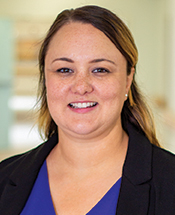 Even in organizations that have a strong track record of quality, the Quality Award journey is productive. Nicholson noted, “I run a facility that has a focus on traumatic brain injury, which is a unique demographic within long term care. We were doing well, but the Quality Award process enabled us to really lay the groundwork for a systems approach. We had the opportunity for a team of people that already seemed to really have buy-in and wanted to strive for that level of excellence but could benefit from a strong systems approach.”
Even in organizations that have a strong track record of quality, the Quality Award journey is productive. Nicholson noted, “I run a facility that has a focus on traumatic brain injury, which is a unique demographic within long term care. We were doing well, but the Quality Award process enabled us to really lay the groundwork for a systems approach. We had the opportunity for a team of people that already seemed to really have buy-in and wanted to strive for that level of excellence but could benefit from a strong systems approach.”
Of course, even after an organization receives the Gold Award, their journey isn’t over. There is a need, said Engelauf, to routinely look at your processes, evaluate and analyze data, and evaluate your efforts as part of continuous quality improvement. Leoce added, “Quality improvement efforts should never stop. There are always going to be opportunities for quality improvement, but once you have good processes in place and have engaged the Baldrige Criteria, you are better equipped to address the gaps and get over any hurdles you encounter.”
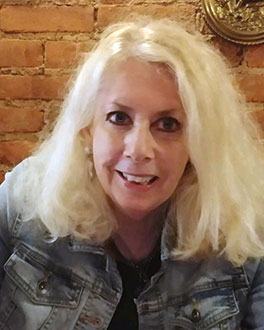 The Quality Award journey is “truly a rewarding experience,” said Engelauf, adding, “Once you go through the process as a leader, you’re better able to help your teams navigate the challenges that come.”
The Quality Award journey is “truly a rewarding experience,” said Engelauf, adding, “Once you go through the process as a leader, you’re better able to help your teams navigate the challenges that come.”
Joanne Kaldy is a freelance writer and communications consultant based in New Orleans.